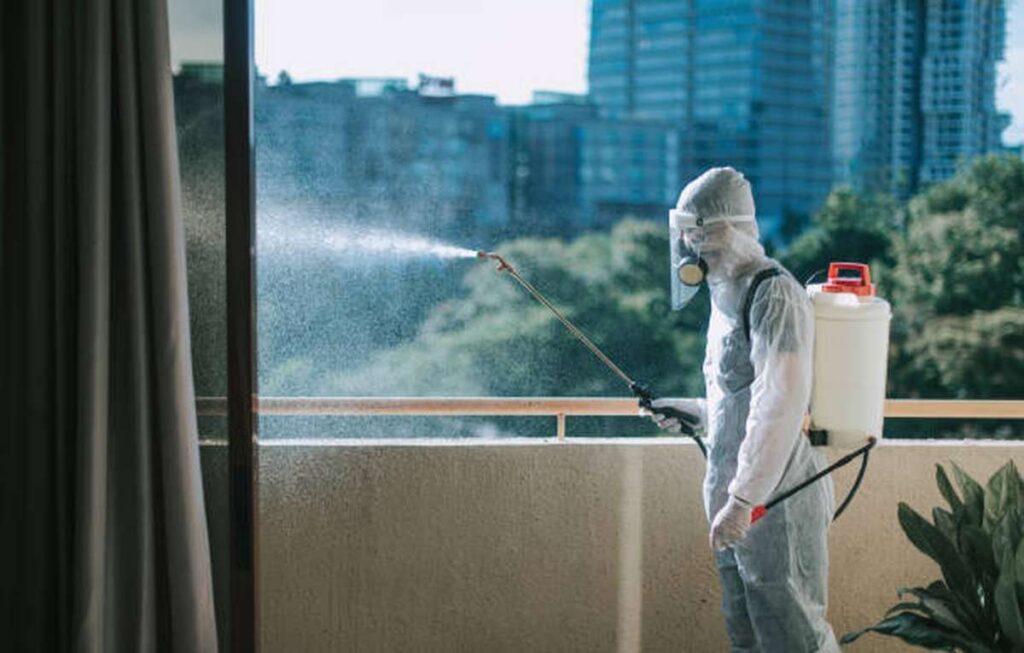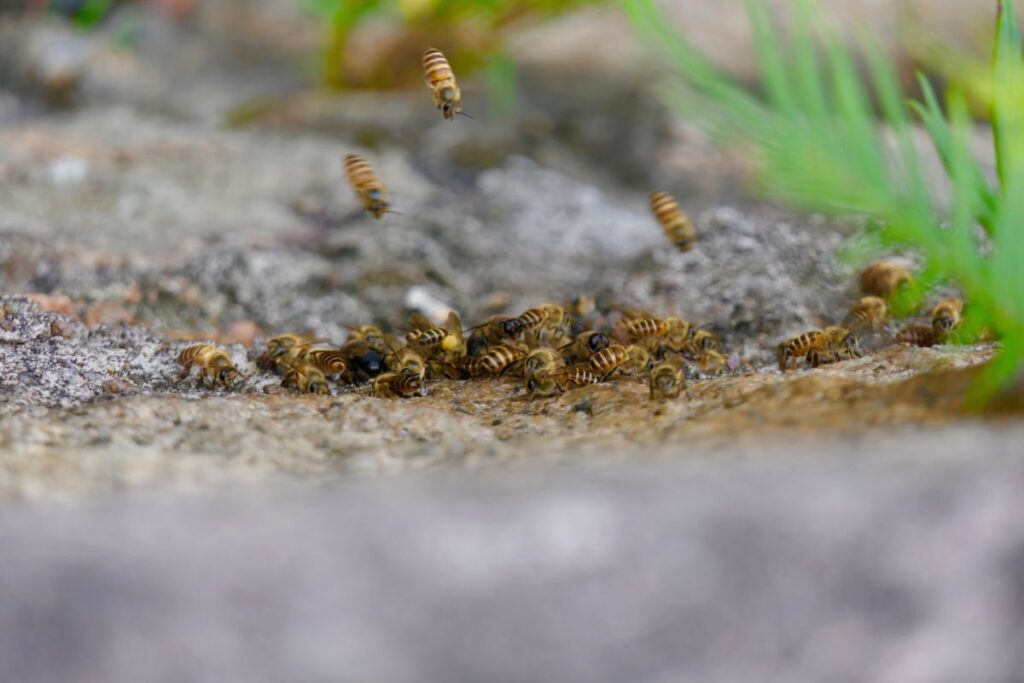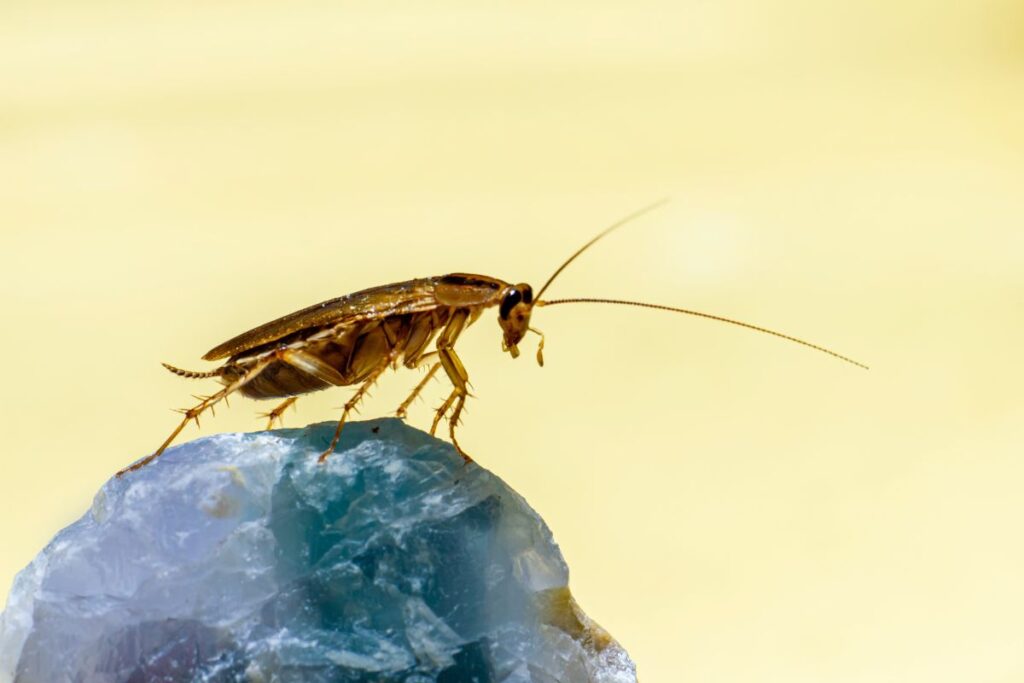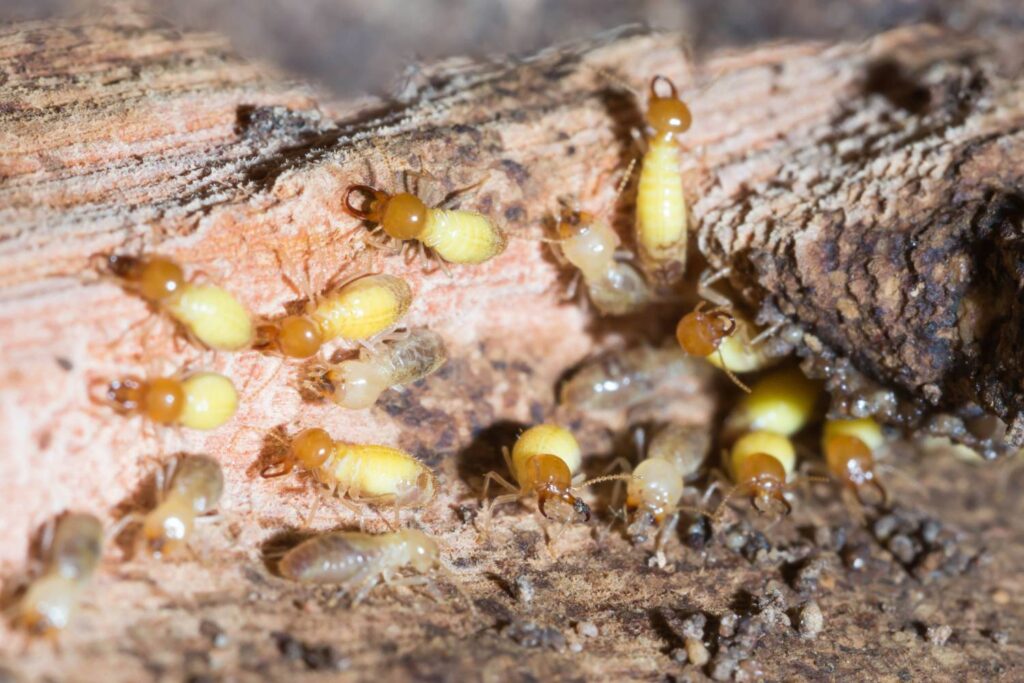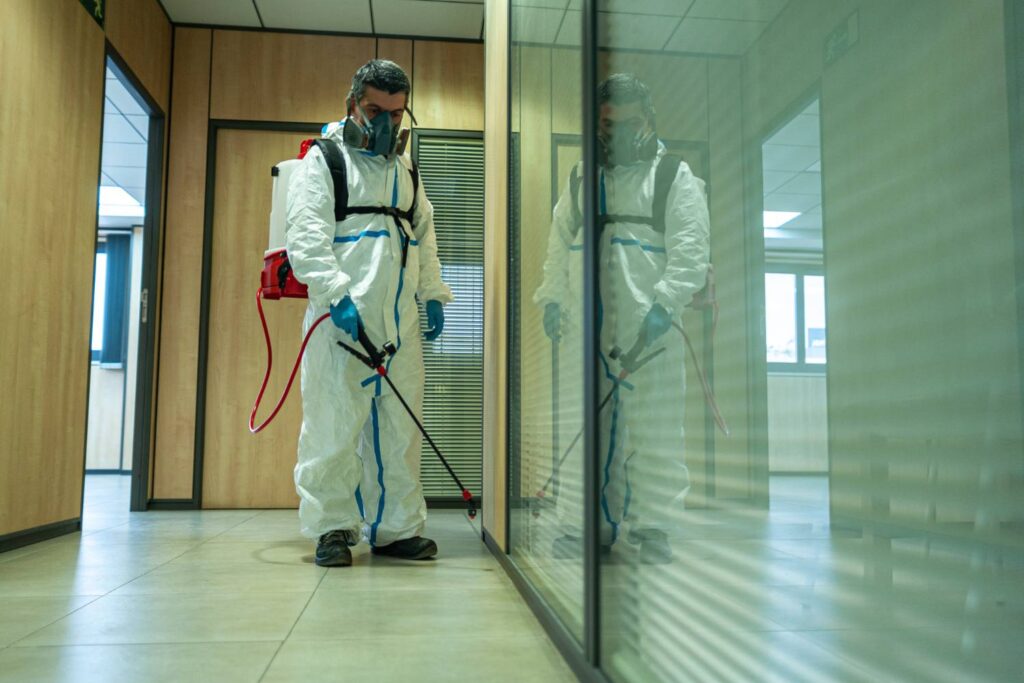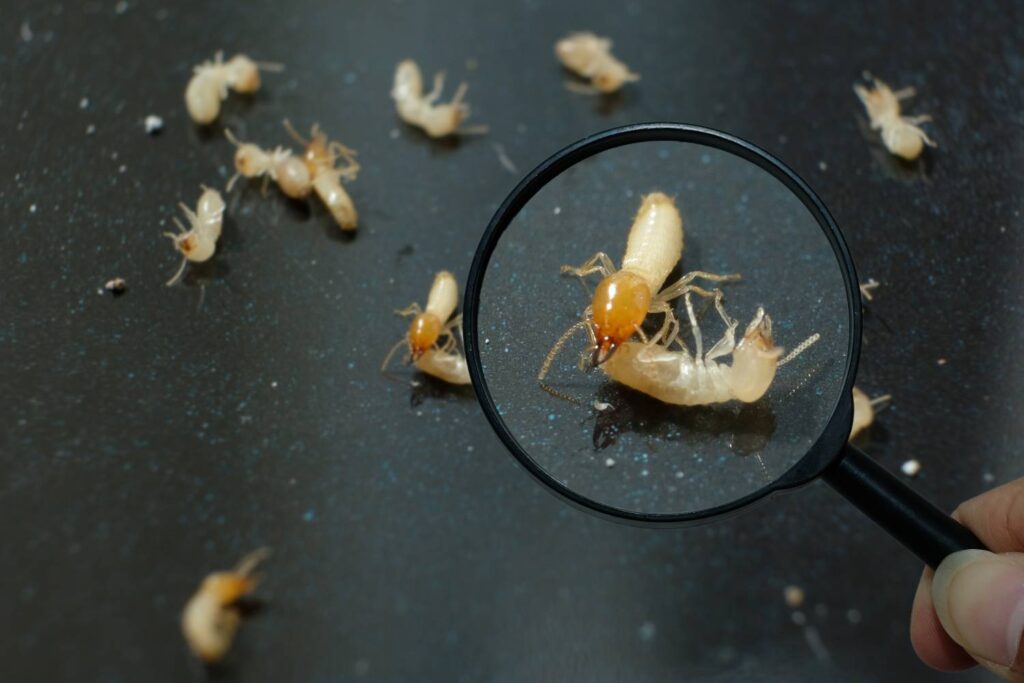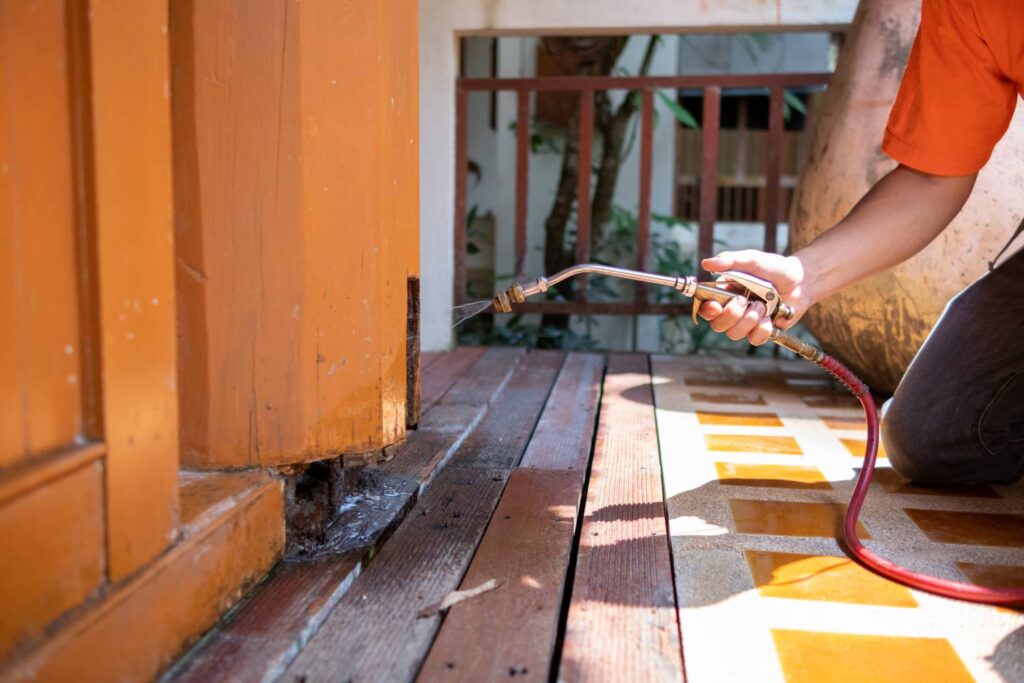Beginning the fumigation process to clear your home of pests is a crucial step towards ensuring that your living environment is safe and nutritious for you and your family. There is, however, a significant question that emerges once the process is over, and that is, "Can I sleep in my house after fumigation?"
Homeowners who are anxious to return to their regular routines but are hesitant about the potential health concerns linked with post-fumigation residues are the ones who should be most concerned about this matter. Before returning to your home after it has been fumigated, it is crucial to consider the rules and safety procedures discussed in this blog.
In this section, we will discuss the criteria that decide whether it is safe to return, the measures you should take, and the approaches you can take to guarantee that your property is fully clear of any harmful substances. To provide you with peace of mind and a clear path back to the comfort of your pest-free home, we invite you to join us as we navigate through the post-treatment landscape during this process.
The Fumigation Aftermath
Fumigation, a potent method for eradicating pests, leaves homeowners with the critical task of ensuring their homes are safe for reentry. This process, while effective, involves the use of chemicals that can pose health risks if not adequately managed post-treatment. Understanding the aftermath of fumigation and taking appropriate steps can mitigate these risks, ensuring the safety and well-being of your family.
Post-Fumigation Ventilation
One of the first steps after fumigation is ventilation. Opening all windows and using fans to circulate air helps remove lingering fumigant gases. This process is crucial for diluting and eliminating toxic residues from the indoor environment, making it safe for reoccupation.
Cleaning Guidelines
After ensuring adequate ventilation, a thorough cleaning of the house is recommended. This includes vacuuming all surfaces to remove dead pests and dust that may have absorbed fumigants. Wiping all hard surfaces with a damp cloth followed by a vinegar and water solution can further reduce potential chemical residues. Also, laundering all bedding, curtains, and clothing in the house during fumigation helps remove contaminants.
Health Precautions
Re-entering a fumigated home too soon can lead to exposure to harmful chemicals, resulting in symptoms such as nausea, headaches, and respiratory issues. It's essential to wait until the pest control professionals give the all-clear before returning. Even then, being vigilant for any signs of chemical exposure and seeking medical advice if symptoms develop is crucial.
Environmental And Safety Considerations
Using chemicals in fumigation raises concerns about environmental impact and safety. Modern fumigants are designed to minimise these concerns, breaking down quickly and leaving no harmful residues when used correctly. However, understanding the specific chemicals used and their potential effects is essential for homeowners. Protecting sensitive items, such as food and medications, during fumigation can prevent contamination.
Reoccupation And Monitoring
Before moving back into your home, ensure a professional has tested the air quality to confirm the absence of harmful fumigant levels. Continuous monitoring for any signs of pest activity is also essential, as fumigation addresses existing infestations but does not prevent future ones. Implementing preventive measures and scheduling regular inspections can help maintain a pest-free home.
Safety Measures And Precautions
In the aftermath of fumigation, ensuring the safety and well-being of occupants is paramount. Fumigation involves the use of potent chemicals to eradicate pests, which, while highly effective, can pose risks if not handled with the utmost care. Drawing insights from various expert sources, we've compiled essential safety measures and precautions to consider before re-entering and settling back into your fumigated home.
Pre-Fumigation Preparations
- Secure and Protect: Before fumigation, it's crucial to secure and protect household items, especially those that might absorb fumigants, such as mattresses, clothing, and upholstered furniture. Removing or covering these items can prevent contamination.
- Kitchen Precautions: Clear the kitchen of utensils, food, and appliances. Covering and sealing items that cannot be removed can safeguard against chemical exposure.
- Pet Safety: Pets are susceptible to fumigation chemicals. Ensure they are relocated to a safe environment until it's safe to return.
- Plant Care: Indoor plants should be moved outside to prevent damage from the fumigants, while outdoor plants near the structure should be trimmed and watered to protect them.
Post-Fumigation Safety
- Ventilation: Post-fumigation, the first step is to ventilate the property thoroughly. Opening windows and using fans can help dissipate residual fumigants, making the air safe to breathe.
- Cleaning Up: After ensuring adequate ventilation, thoroughly clean the house. Focus on vacuuming all surfaces, wiping down hard surfaces with a damp cloth, and laundering fabrics to remove any traces of chemicals.
- Health Monitoring: Be vigilant for symptoms of chemical exposure, such as nausea, headaches, or respiratory issues, and seek medical advice if symptoms arise.
Environmental And Health Considerations
- Understanding Chemicals Used: Familiarise yourself with the fumigants used in the process. Modern fumigants are designed to minimise health risks, but knowing their potential effects is essential for taking appropriate precautions.
- Legal and Compliance Aspects: Ensure the fumigation process complies with local regulations and safety standards and that licensed professionals conduct it.
Reoccupation Guidelines
Professional Clearance: Wait for a professional clearance before re-entering your home. Pest control experts will assess when it's safe to return based on the dissipation of fumigants.
Continuous Monitoring: Monitor for any signs of pest activity post-fumigation and conduct regular inspections to prevent future infestations.
Signs Your Home Is Safe To Re-Enter
Ensure your home is safe for reentry after a fumigation process. This process involves waiting for the fumigants to dissipate and understanding and recognising the clear signs that it's safe to return. Drawing from various expert sources, here are the key indicators and steps to ensure your home is ready to welcome you back safely.
Official Clearance and Reentry Notice
A licensed fumigator will assess your property to determine its safety for reentry. Once deemed safe, they will place a sign on the front door stating, "This building is safe for Reentry," along with the date and time the property was cleared. This official notice is a primary indicator that it's safe to return.
Removal Of Warning Signs And Locks
All secondary locks and warning signs placed during fumigation will be removed. This action signifies that the property has been thoroughly ventilated and is no longer under the fumigation effect.
Quality Assurance Check
A termite inspector or fumigation team member may conduct a walk-through with the homeowner. This quality assurance check ensures that everything was done correctly and that the home is as you left it, further affirming the safety of reentry.
Utility Restoration
The reentry notice is also crucial for utility restoration. For instance, gas services halted during fumigation will not be resumed without this notice. Homeowners are responsible for scheduling these services to be turned back on, indicating a move towards normalcy.
Post-Fumigation Home Order
Once you have permission to re-enter your home, you can start restoring your house. This includes unpacking suitcases, un-bagging food, and turning appliances back on, like the ice maker, which should be done with the disposal of the first batch of ice as a precaution.
No Need For Extensive Cleaning
A significant sign that your home is safe is the absence of residue from the fumigant. Modern fumigants, like Vikane gas, leave no residue, eliminating the need for extensive surfaces and dishes post-fumigation cleaning.
Monitoring For Pests
In the days following fumigation, it's normal to find dead pests around the house. Regular cleaning to remove these remnants is advised. However, their presence should decrease over time, indicating the effectiveness of the fumigation.
Health And Safety
Upon reentry, if you or your family experience symptoms such as itchy eyes, coughing, or difficulty breathing, it may indicate exposure to residual chemicals. In such cases, vacate the premises and consult a medical professional.
Legal Compliance
Fumigation companies must post a sign with the fumigation details in a permanent location within the home, such as the attic or subarea. This legal requirement ensures that future occupants know the home's fumigation history.
Health Considerations After Fumigation
After completing a fumigation process, it's crucial to address health considerations to ensure the safety and well-being of all occupants before re-entering the treated space. While effective against pests, fumigants are toxic to humans and animals, necessitating strict adherence to safety protocols and awareness of potential health risks. Here's a comprehensive overview of health considerations following fumigation, derived from authoritative sources.
Understanding Fumigant Toxicity
Fumigants are designed to penetrate deeply and eliminate pests, but their volatile and toxic nature means they can also pose risks to humans. Fumigant exposure can occur before, during, or after the treatment if proper precautions are not taken. It's essential for anyone involved in fumigation to have a thorough understanding of the toxic properties of fumigants and to employ every precaution to avoid exposure.
Threshold Limits And Exposure
Knowledge of the threshold limits for each fumigant is critical. These limits indicate the concentration levels above which it is unsafe for individuals to be exposed and define the maximum exposure periods, including repeated exposures during regular working hours. Threshold limits, usually expressed in parts per million by volume in air, serve as guides in controlling health hazards and should not be regarded as absolute boundaries between safe and dangerous concentrations.
Acute And Chronic Hazards
Exposure to toxic gases can result in acute or chronic health effects. Acute effects may arise from a single exposure to high levels of a fumigant, with symptoms appearing within minutes or hours. On the other hand, chronic effects may result from repeated exposure to low levels over time, with symptoms potentially not manifesting until long after exposure. Some fumigants have been shown to produce cancer in test animals under experimental conditions, highlighting the importance of minimising exposure.
Precautions And Protective Measures
General Precautions For Handling And Using Fumigants Include:
- Ensuring no person works alone during fumigation to mitigate risks in an emergency.
- Proper respiratory protection and care to prevent skin contact with fumigant formulations.
- She avoids exposure to escaping fumigant and prevents unauthorised entry into treated spaces.
- We are utilising gas detection equipment post-treatment to confirm the removal of all fumigant residues.
First Aid And Medical Supervision
All individuals involved in fumigation should be trained in basic first aid, emphasising techniques for gas poisoning. An adequately provisioned first aid kit should be readily available, and those regularly engaged in fumigation should be under proper medical supervision. Physicians treating potential fumigant poisoning must know the chemicals used and their application methods.
Final Considerations
Re-entering a fumigated space requires careful consideration of the potential health risks associated with residual fumigants. Ensuring adequate ventilation, following professional clearance, and being vigilant for symptoms of chemical exposure are paramount. If any health symptoms are experienced after re-entering, seeking medical advice is crucial.
Conclusion
Fumigation is crucial in eradicating pests from your home, but it can pose health risks if not adequately managed post-treatment. To ensure your family's safety and well-being, following these guidelines before returning to your home is essential.
Post-fumigation, the first step is ventilation, which involves opening windows and using fans to circulate air to remove lingering fumigant gases. After ensuring adequate ventilation, a thorough house cleaning is recommended, including vacuuming surfaces, wiping down hard surfaces with a damp cloth, and laundering bedding, curtains, and clothing.
Environmental and safety considerations are also important, as modern fumigants are designed to minimise these concerns. Protecting sensitive items, such as food and medications, during fumigation can prevent contamination.
Before moving back into your home, ensure a professional has tested the air quality and maintains continuous monitoring for signs of pest activity. Understanding the chemicals used, legal and compliance aspects, and regular inspections can help maintain a pest-free home.
After fumigation, it is crucial to ensure your home is safe for reentry. Key indicators include an official clearance and reentry notice from a licensed fumigator, removal of warning signs and locks, quality assurance checks, utility restoration, a post-fumigation home order, no need for extensive cleaning, monitoring for pests, health and safety, legal compliance, and health considerations.
Official clearance and reentry notice are essential signs that your property is safe for reentry. A licensed fumigator will assess your property and place a sign stating, "This building is safe for Reentry," along with the date and time the property was cleared. All secondary locks and warning signs placed during fumigation will be removed, indicating thorough ventilation.
Quality assurance checks by termite inspectors or fumigation team members ensure everything was done correctly and the home is as you left it. Utility restoration is also crucial, as gas services halted during fumigation will only be resumed with this notice. Post-fumigation home order involves unpacking suitcases, unbagging food, and turning appliances back on.
Residual chemicals may leave residue, so regular cleaning is advised. Health and safety concerns include itchy eyes, coughing, or difficulty breathing, which may indicate exposure to residual chemicals. Legal compliance requires fumigation companies to post a sign with fumigation details in a permanent location within the home.
In conclusion, re-entering a fumigated space requires careful consideration of potential health risks associated with residual fumigants. Ensuring adequate ventilation, following professional clearance, and being vigilant for chemical exposure are paramount.
Content Summary
- Fumigation is a crucial step towards ensuring a safe and healthy living environment.
- A significant concern post-fumigation is whether it's safe to sleep in the house.
- Homeowners are eager to return but wary of potential health risks from residues.
- Essential guidelines and safety measures must be considered before reentry.
- The blog discusses criteria for safe return and methods to ensure a clean environment.
- Fumigation involves chemicals that can pose health risks if not managed properly.
- Ventilation is a critical first step in the aftermath of fumigation.
- Opening windows and using fans helps remove lingering fumigant gases.
- A thorough cleaning of the house is recommended post-fumigation.
- Vacuuming, wiping down surfaces, and laundering fabrics can reduce chemical residues.
- Re-entering too soon may expose occupants to harmful chemicals.
- Symptoms like nausea, headaches, and respiratory issues can arise from exposure.
- Before returning, it's crucial to wait for the all-clear from pest control professionals.
- Modern fumigants are designed to minimise environmental impact and safety concerns.
- Understanding the chemicals used and their effects is essential for homeowners.
- A professional air quality test can confirm the absence of harmful fumigant levels.
- Continuous pest monitoring is essential, as fumigation does not prevent future infestations.
- Pre-fumigation preparations include securing and protecting household items.
- Kitchen precautions and pet safety are important considerations.
- Post-fumigation safety focuses on ventilation and cleaning up.
- Health monitoring for symptoms of chemical exposure is advised.
- Familiarising oneself with the fumigants used can aid in taking appropriate precautions.
- Professional clearance is a crucial indicator that it's safe to re-enter the home.
- Official clearance and reentry notice provide primary assurance of safety.
- Removal of warning signs and locks signifies thorough ventilation.
- A quality assurance check with a termite inspector affirms safety for reentry.
- Utility restoration, like gas services, indicates a move towards normalcy.
- Post-fumigation home order involves unpacking and turning appliances back on.
- The absence of residue from modern fumigants like Vikane gas means extensive cleaning is unnecessary.
- Monitoring for pests post-fumigation is normal and indicates effectiveness.
- Experiencing symptoms upon reentry may indicate exposure to residual chemicals.
- Legal compliance ensures future occupants are aware of the home's fumigation history.
- Fumigants' toxic nature means exposure can pose risks to humans and animals.
- Threshold limits indicate safe concentration levels for exposure.
- Acute and chronic health effects can result from exposure to fumigants.
- General precautions include ensuring no person works alone and proper respiratory protection.
- Basic first-aid training and medical supervision are essential for those involved in fumigation.
- Careful consideration of health risks associated with residual fumigants is paramount.
- Adequate ventilation and professional clearance are crucial before re-entering.
- Symptoms of chemical exposure should prompt seeking medical advice.
- The blog aims to provide peace of mind and a clear path to a pest-free home.
- Safety measures and precautions are compiled from various expert sources.
- The aftermath of fumigation requires careful management to ensure safety.
- Cleaning guidelines post-fumigation aim to reduce potential chemical residues.
- Environmental and safety considerations address concerns about the use of chemicals.
- Reoccupation and monitoring ensure the home remains safe and pest-free.
- Signs your home is safe to re-enter include official clearance and the removal of warning signs.
- Health considerations after fumigation focus on understanding fumigant toxicity and exposure limits.
- Precautions and protective measures help mitigate risks associated with fumigation.
- The blog navigates through post-treatment safety, emphasising the importance of following professional advice for a safe return to a fumigated home.
Frequently Asked Questions
The waiting period before you can safely sleep in your house after fumigation typically ranges from 24 to 72 hours, depending on the chemicals used and the size of your home. It's crucial to follow the specific instructions your pest control professional provides.
Signs that your home is safe to re-enter include the fumigation company removing warning signs and locks, an official reentry notice, and confirmation from the pest control professionals that the fumigant has dissipated to safe levels.
Yes, re-entering your home too soon after fumigation can expose you to residual chemicals, potentially leading to symptoms such as nausea, headaches, respiratory issues, and eye irritation. Always wait for official clearance before returning.
Before re-entering your home:
- Ensure it has been thoroughly ventilated.
- Follow all guidelines provided by the fumigation company.
- Consider conducting a walk-through with a pest control professional to ensure safety.
Yes, it's recommended that you clean your home after fumigation. Focus on vacuuming, wiping down surfaces with a damp cloth, and laundering bedding, curtains, and clothing to remove any potential residues.




